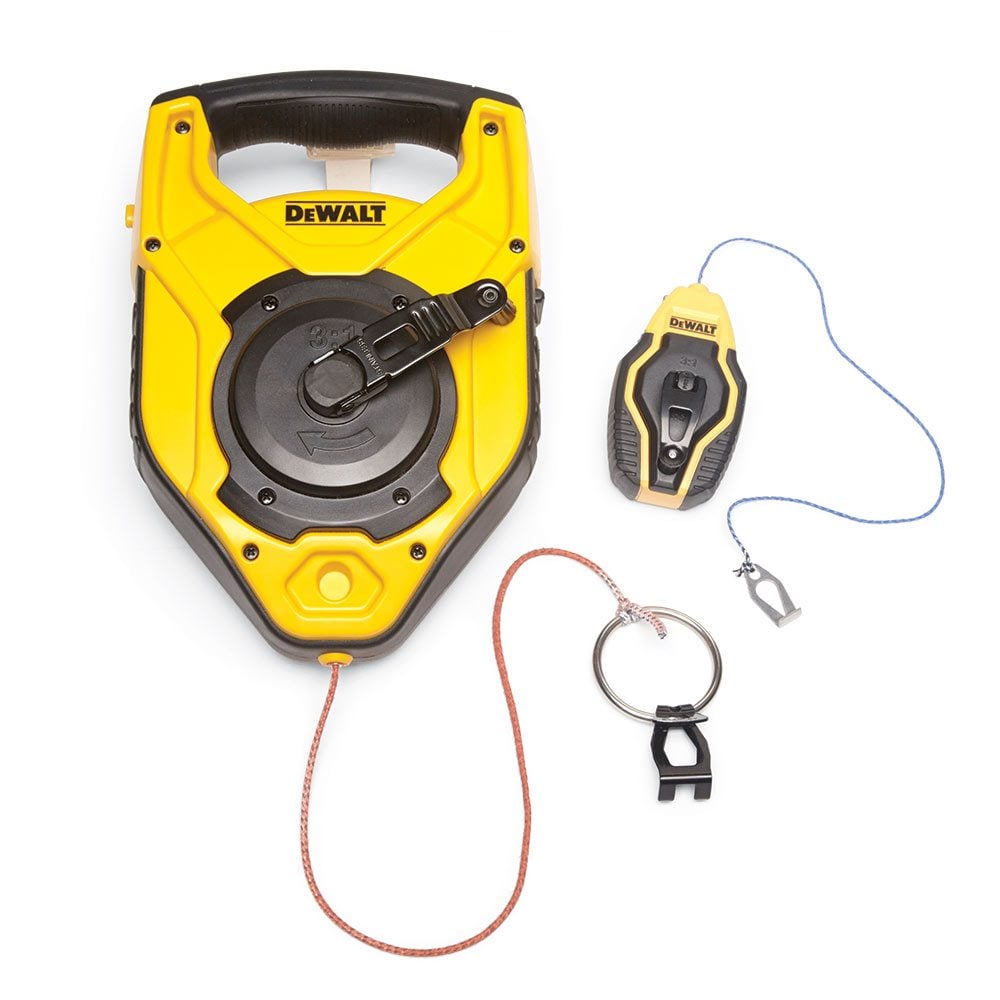
Chalk lines… does one size fit all?
The kind of chalk line you want to use depends on the job you need to use if for. The larger model has a string as thick as a bootlace and holds 1 pound of chalk, perfect for marking up a lot of long lines. The smaller model has a 3-to-1 rewind ratio and is just the thing for pros who only snap an occasional line and don’t want to sacrifice a lot of space in their pouch. The compact chalk reel comes with a 30-foot line and a bottle of blue chalk, while the large capacity chalk reel has a 100-foot line.

Wheel of fortune
Most construction jobs start with an estimate, and precise measurements are crucial to a profitable job. Sometimes a tape measure is just not the right tool–digital or not—for measuring long distances, especially outdoors. When bidding on a fence or retaining wall, you are not going to impress customers by having them hold the end of your tape measure—and first impressions are important. Instead, use a measuring wheel like this one from Calculated Industries, which has a 12-1/2-inch wheel and folds in half for easy storage.
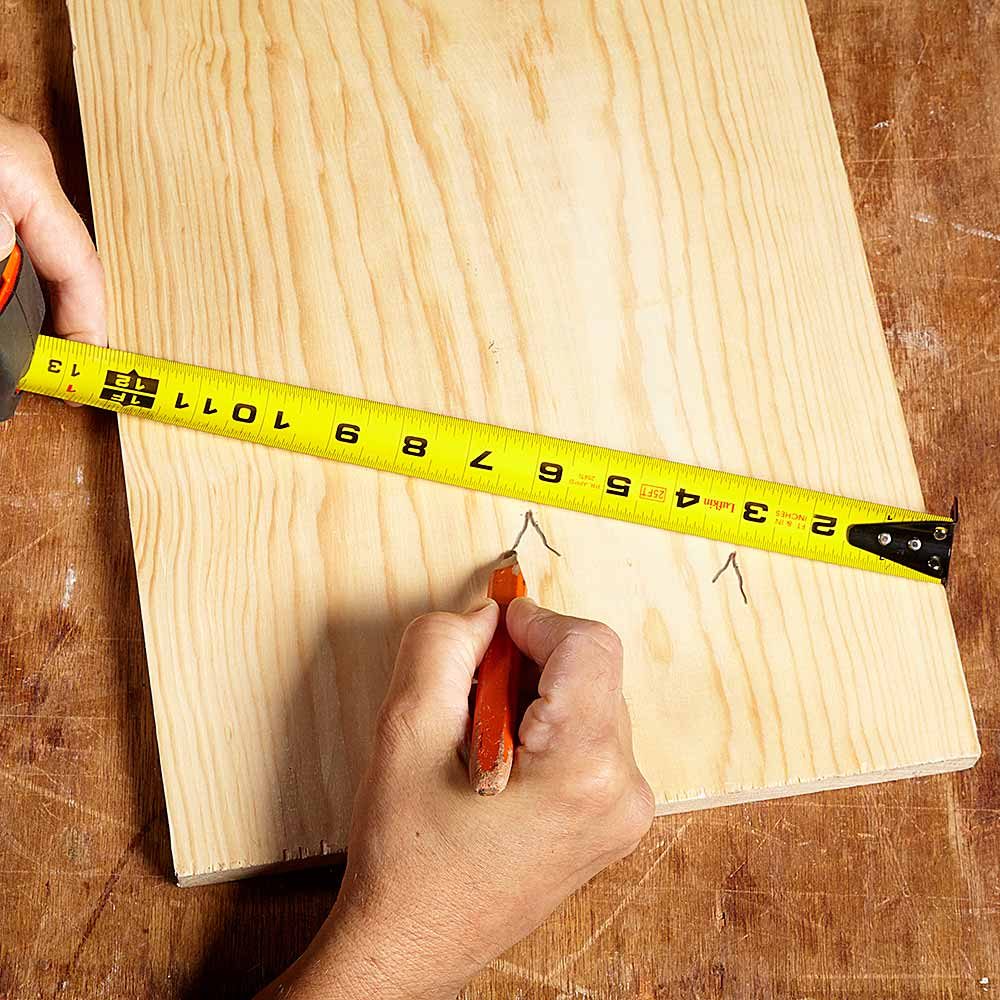
How to divide a board into equal widths
When you want to cut a board into equal widths, you can either do some tricky math or memorize this simple trick. Let’s say you want four strips: Pick a number that is easy to divide by four (12, for example) and measure that distance diagonally across the board. Then mark the board at 3-inch increments (3, 6 and 9 inches, respectively) and your marks will automatically divide the board into equal widths.
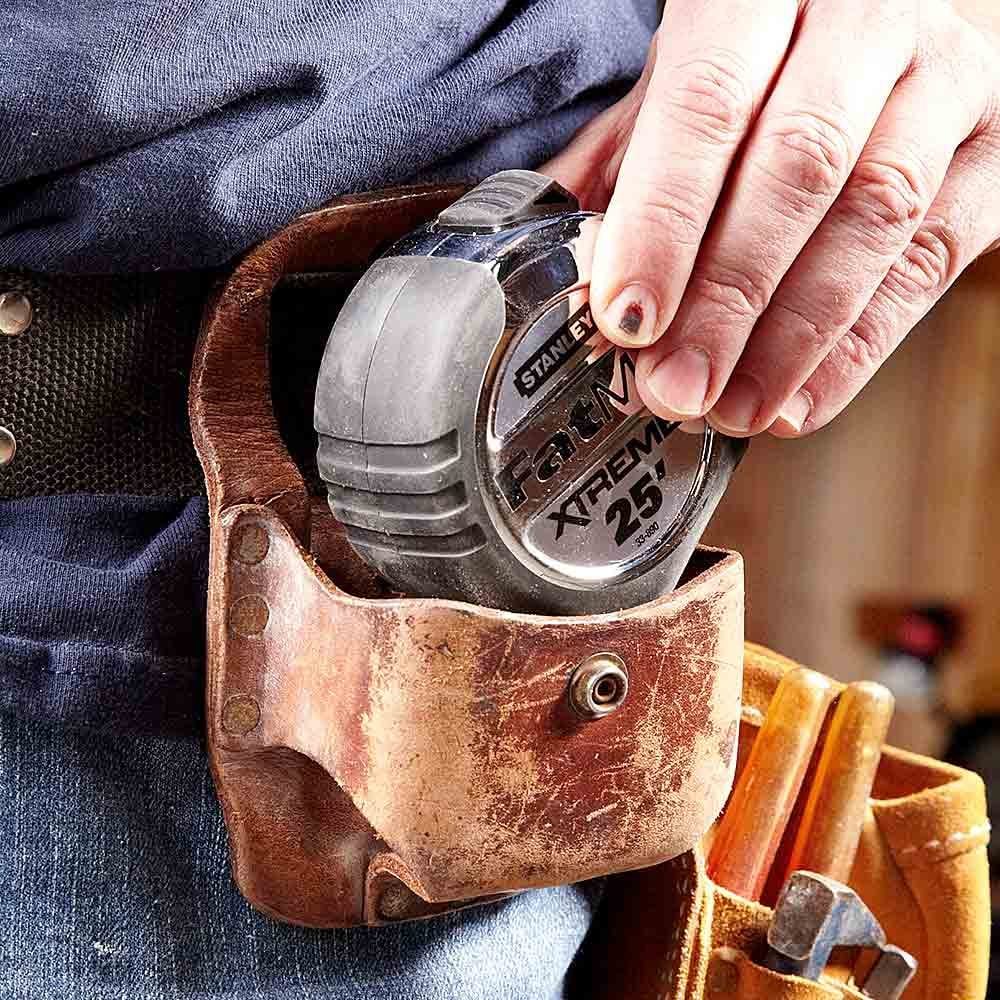
Fat tapes need a fat holster
A wide-blade, long-reach tape is a very useful tool, but most don’t fit into a standard tape holder and the super-sized holsters that do fit them are not usually available at home centers. Here’s a tape holster that comfortably handles almost every 25-foot “fat tape” we know of.
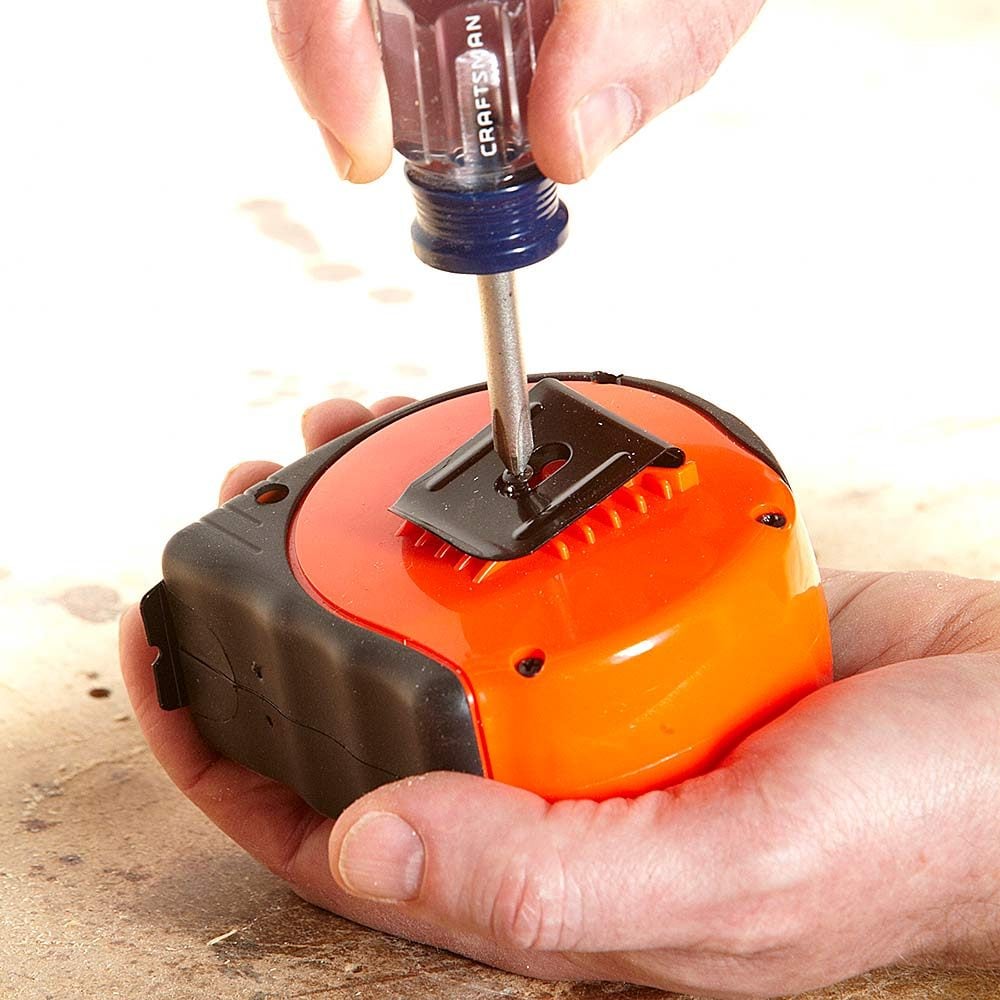
Remove the belt clip
When you get a new tape measure, immediately unscrew the clip. A clip-less tape slips smoothly in and out of your tool belt and won’t get snagged on anything.
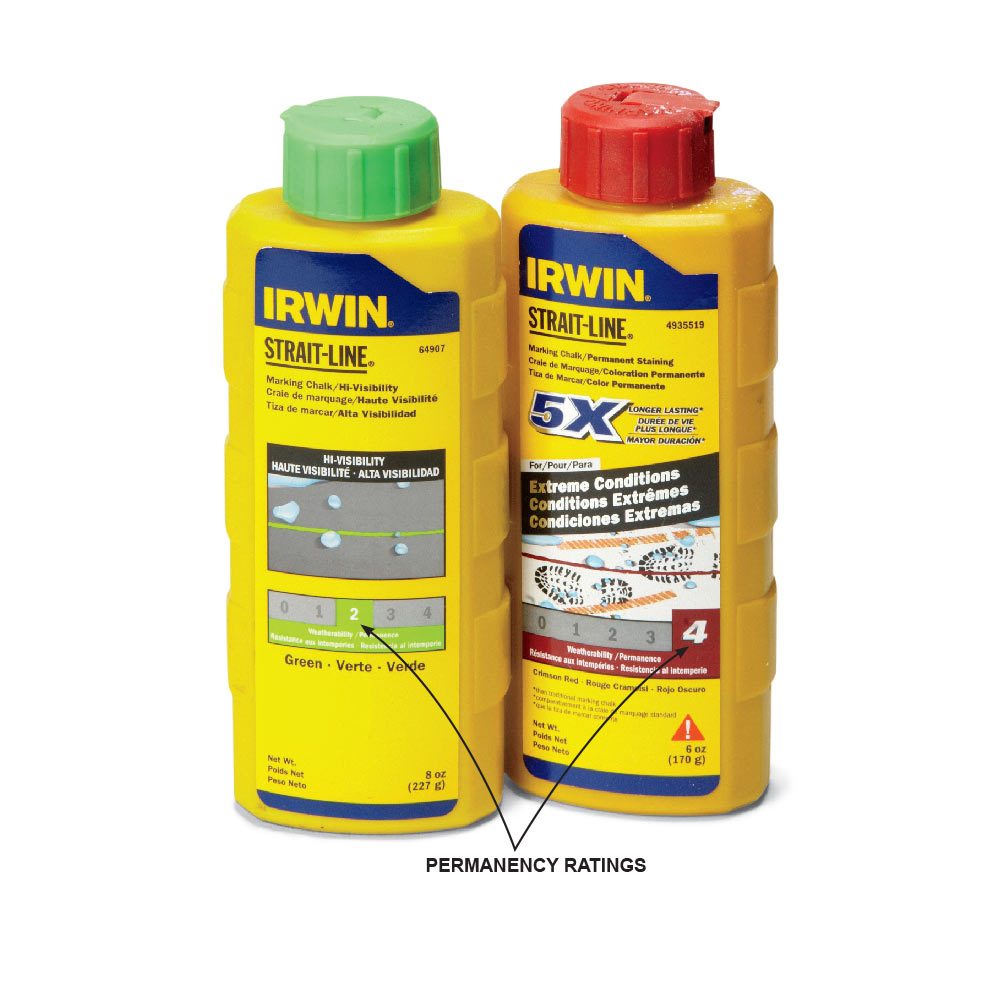
What’s the best chalk color for outdoor projects?
“Choose your marking chalk color based on two things,” says Lisa Hunter of Irwin Tools. “First, think about what sort of permanency you need. How long will the chalk lines be exposed to the elements? Second, decide what color will give the best contrast on the surface.”
Marking chalk permanency ratings run on a scale of 0 to 4 (look for the rating on the chalk container). Carpenters who work on a variety of projects should generally carry two colors—red and blue—in separate chalk boxes. Use blue when you need a chalk line that will disappear, like when you are shingling a roof. The blue chalk will wash right off after the first rain. Red, on the other hand, is much more permanent- use it on a roof and it might take years for it to disappear. But if you’re laying out walls and you want the lines to stay there even if it rains, red chalk is the way to go.
Bonus tip: if you’re snapping lines on a blue painted wall, consider using violet or white chalk. The chalk will stand out and then dust right off the wall with no residue.

Measuring tools for ‘southpaws’
It’s estimated that ten percent of people in the world are left-handed, but it can seem like 99 percent of tools are made for people with dominant right hands. Well, lefties, here you go. You can pull out this Right-to-Left Read Retractable Left-Handed Tape Measure and read numbers while measuring just as easily as right-handers do.

Time-saving triangle
This giant triangle is perfect for installing paver patios and driveways because it allows users to quickly and accurately chalk square layout lines. You could do the same thing using the 3-4-5 triangle method, but this is faster. Just align the chalk line with the edge of the triangle and snap the line. The A-Square folding triangle even folds so that it takes up less room in your truck or trailer.
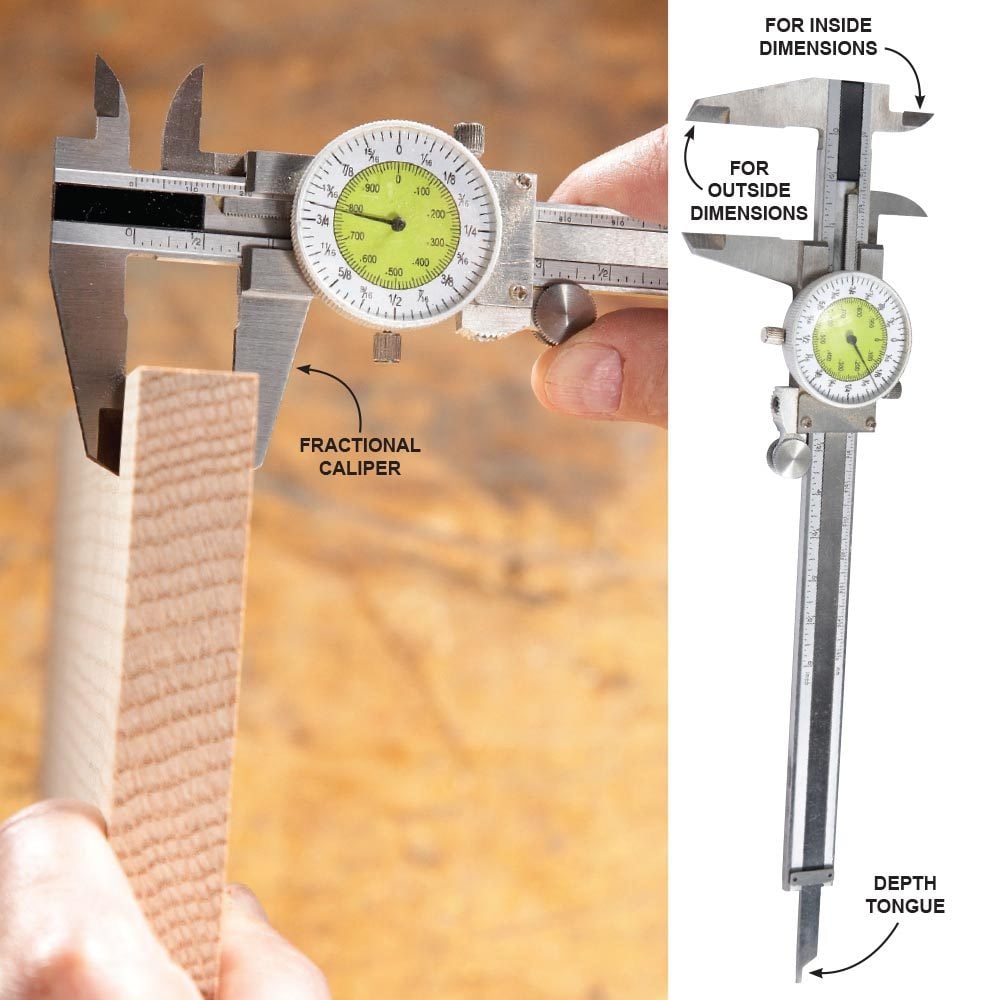
A caliper for the common man
Slide calipers are typically graduated in decimals. That’s perfect for engineering, but most construction measurements are based around fractions and converting measurements can slow you down. That’s why you need a fractional caliper, which reads in fractions instead of decimals.
The dial of this fractional caliper is clearly marked in 1/64-in. increments, and finer measurements are possible as well. One complete revolution equals 1 in. (Digital fractional calipers are also available.) A thumbscrew operates the mechanism and separate jaws allow you to measure both inside and outside dimensions. A plunge bar extends from the bottom for measuring depths. This caliper does read in decimals, too, which is still useful for measuring things like paper-thin shims and fine veneers.
Every product is independently selected by our editors. If you buy something through our links, we may earn an affiliate commission.
